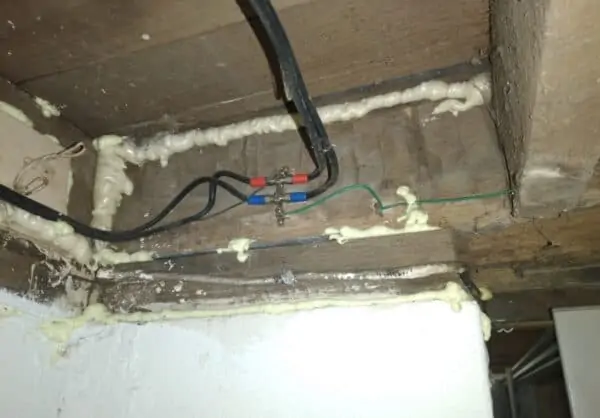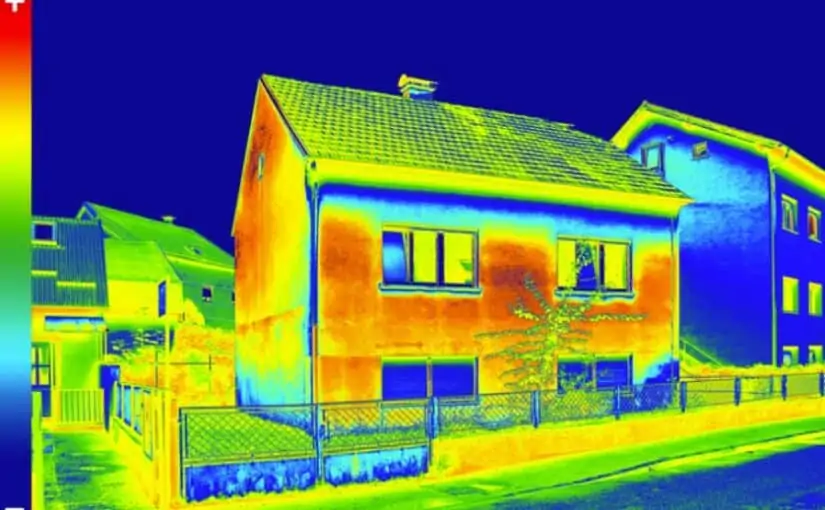Winter is here. Much of the country is experiencing windy bitter cold days that can sap the energy right of not only you – but your home as well! But on the bright side, you can actually take advantage of these frigid days to conduct your own DIY home energy audit. And it can cost you nearly nothing once you know where to look!
You can hire professional home energy audits and have an expert come in and analyze your home with fancy FLIR cameras and other specialized equipment. And while the results are definitely interesting, this service can be expensive. It is possible to learn much of the same information on a very small budget by conducting your own do it yourself home energy audit.
We have talked about several ways to reduce your home’s energy usage in the past. Not only will it help you save money, but it also improves your self sufficiency. Solar energy, wind power, or any other off-grid energy source is much easier when you don’t need as much energy in the first place.
How Thermal Energy Moves
Understanding the physics of how thermal energy actually moves in and out of your home is the first step towards improving the home energy efficiency. There are two main ways heat (thermal energy) moves throughout a home.
Air Circulation is the first way thermal energy moves. This shows up often as a drafty window in the winter. New windows attempt to form an air-tight seal between the inside and outside of your house. But as the window ages – or if it was not installed properly – air will leak through. If air is moving in or out of the house, it is taking thermal energy with it. The bigger the temperature difference on each side of the window, and the windier the day, the more noticeable of an issue this becomes.
Air leaks are also common around the seals of exterior doors, but also exterior walls near outlets, baseboards, basement foundations are all places worth investigating. Newer home construction often uses Tyvek HomeWrap or similar products to minimize this problem – but the product is only as good as its installation. I once owned a modern manufacture home that had this product installed – however when the wind blew in the winter you could feel cold air blowing out of many of the AC power receptacles. Obviously the installers had not sealed the exterior walls very well!
It is nearly impossible to have a completely air tight home (and you wouldn’t want to anyway unless you plan to have an air scrubber like on a submarine!) However large air drafts can make keeping your home at a comfortable temperature in the winter or summer much more difficult. One note of exception. A whole house fan can be a great way to pull in cool night air to bring a warm house down in temp after a hot summer day.
Air drafts coming into a home will sap energy in two ways. A) The air coming in during extreme weather will be either much colder or much warmer than the temperature you are trying to maintain. B) When air comes in – the same amount of air is also pushed out somewhere else – the air that your furnace / hvac has already brought to a comfortable temperature.
Thermal Conduction is the second major way heat moves in and out of your home. All materials conduct heat somewhat, but the ones that conduct the least are often used as insulation. Other materials, such as glass, conduct heat pretty well. That is why modern windows use two or more panes of glass, often with a low thermal conducting gas between them.
Tools of the Trade
Professional home energy audits will come armed with an array of high tech equipment, and a thorough knowledge of where to look for energy leaks. While you can determine a lot without any additional tools at all, there are some gadgets that can make the job easier.
The most advanced of the tools commonly used is a FLIR camera. These have been cost prohibitive for the average home owner, but recently we are starting to see cost effective options. There are even models now that can connect with a smart phone.
A Non-Contact Digital Laser Thermometer / Temp Gun provides an easy way to take instant temperature readings on various surfaces throughout your home. This helps with your do it yourself home energy audit by giving more accurate readings than can be determined by feel.
Conducting the DIY Home Energy Audit
Now that you understand the major problems we need to look for, its time to get to work! Start on one end of your home and work your way around the inside perimeter, following the exterior walls from one room to the next. If your house has a basement or multiple levels, I like to start at the bottom level and work up but that is up to you.
Run your hands along the walls pay attention to the surface temperature – or measure them if you have the equipment mentioned above. It is amazing the difference you can feel in surface temperature from one wall to the next. For easy comparison, also check the surface temp of interior walls in the same room. The better the insulation and air seal is on each wall, the less of a difference the temperature will have from interior walls.
Also pay particular attention around cutouts for windows, AC outlets, and along the baseboards. If you are in a basement – pay particular attention to where the house foundation rests on the cinder blocks and where wires / pipes enter the home.
I have also noticed that where you find spider webs is often a clue! It seems the spiders know where the insects can get in, and that usually means air can as well.
Keeping the Winter Weather Outside
Now that we know where the biggest problems are – what can we do to fix them? You would be amazed at the difference just a couple cans of inexpensive expanding foam can make! A word of caution though – WEAR GLOVES! I know – you will be careful – no need to wear old clothes or gloves for a quick job, right? They should name it ‘Gets Everywhere Stuff’!

For leaky windows, you can often seal off a lot of the drafts around the window frame with silicone caulking. Another quick fix for leaky windows is to install inexpensive plastic sheets to seal off window drafts.
Sometimes it may be best to a have different strategy with appliances for the winter vs the summer as well. Rethinking the way your existing clothes dryer works is one example.
Battling the Summer Heat
Many of the fixes above for the winter will also help you in the summer months too. But here are some additional ones that work best for keeping the daytime heat out.
Installing solar window film can reduce the amount of solar energy that radiates in through windows. This light energy gets converted to heat, the same it warms green houses.
Often the summer nights are still pretty cool. In those times of year, a solar attic fan is a great way to cool the house back down at night. If your home has a lot of thermal mass, often this trick can be used to keep your house cool for much of the following day.
What did I miss?
Let me know in the comments what additional tricks you have for conducting you own home energy audits!


speak for you.
comprare patente di Guida
Cementing itself as one of the biggest tier-one game providers in Europe, the partnership will allow the British B2B supplier to further grow its game offering among. https://star77.app
Industries excluded 현금홀덤 from the system are thus expected to face higher difficulties in attracting
which one is green and 현금홀덤 promote public and private investments.